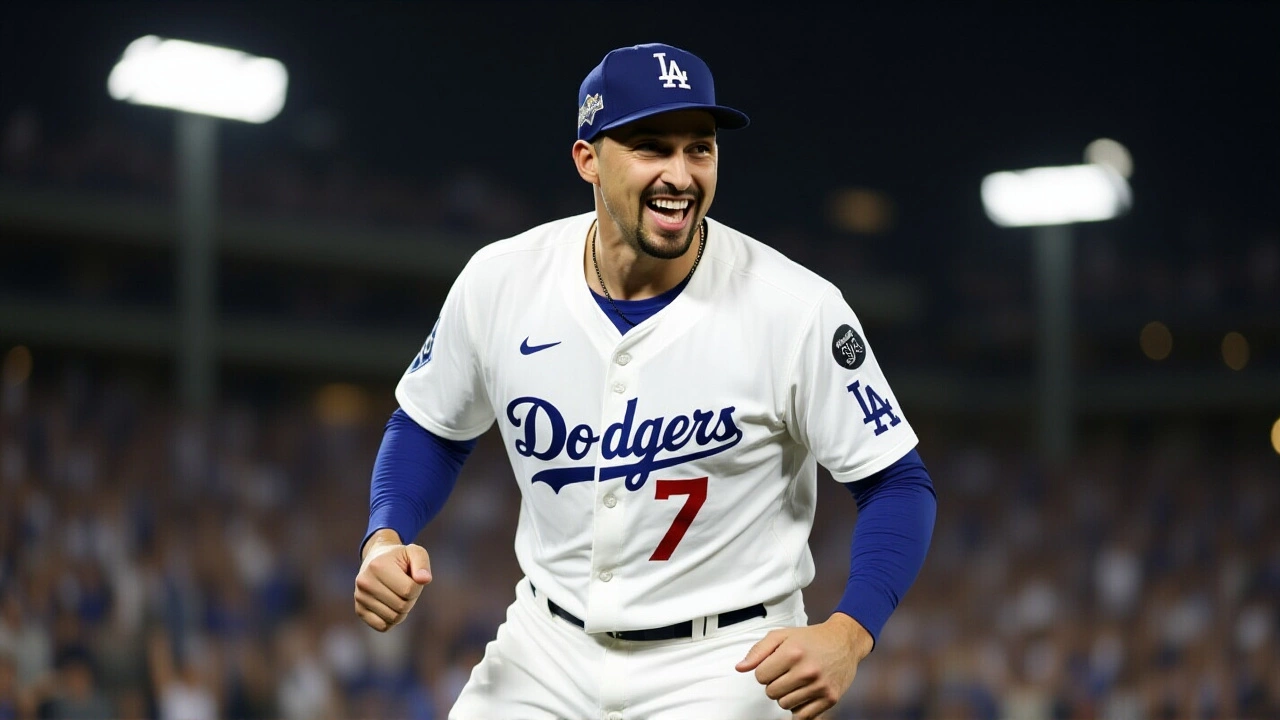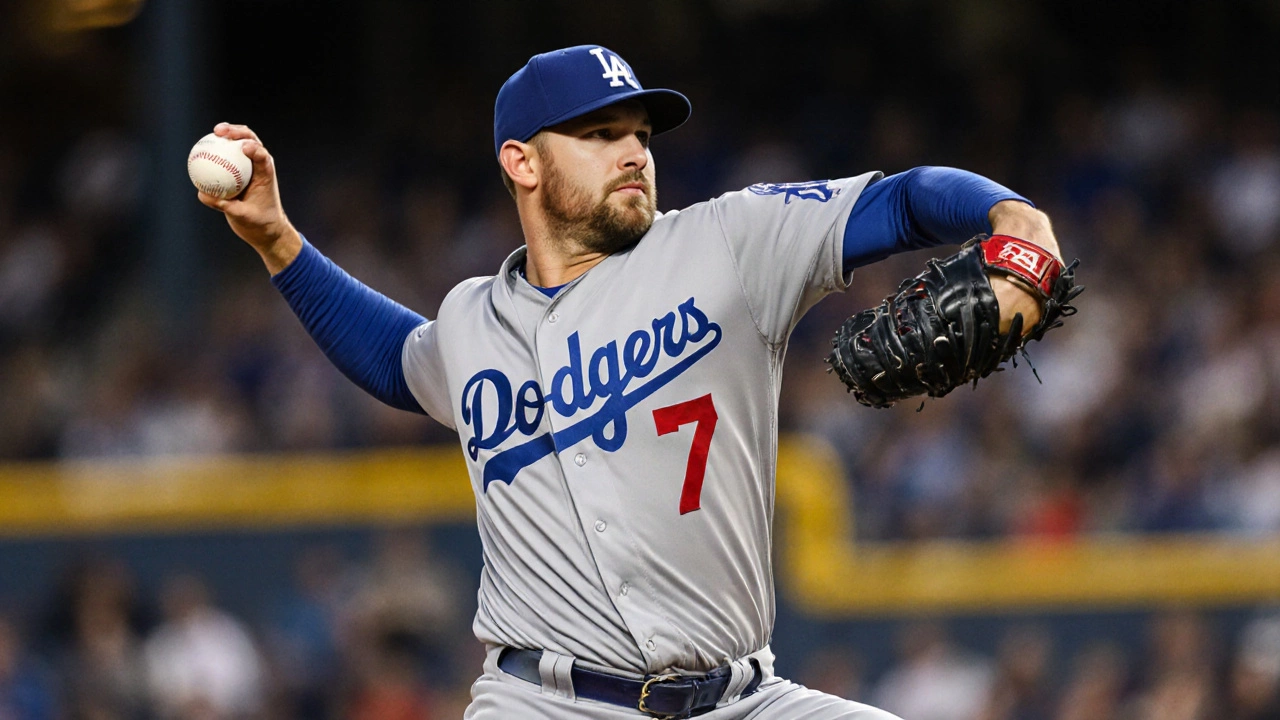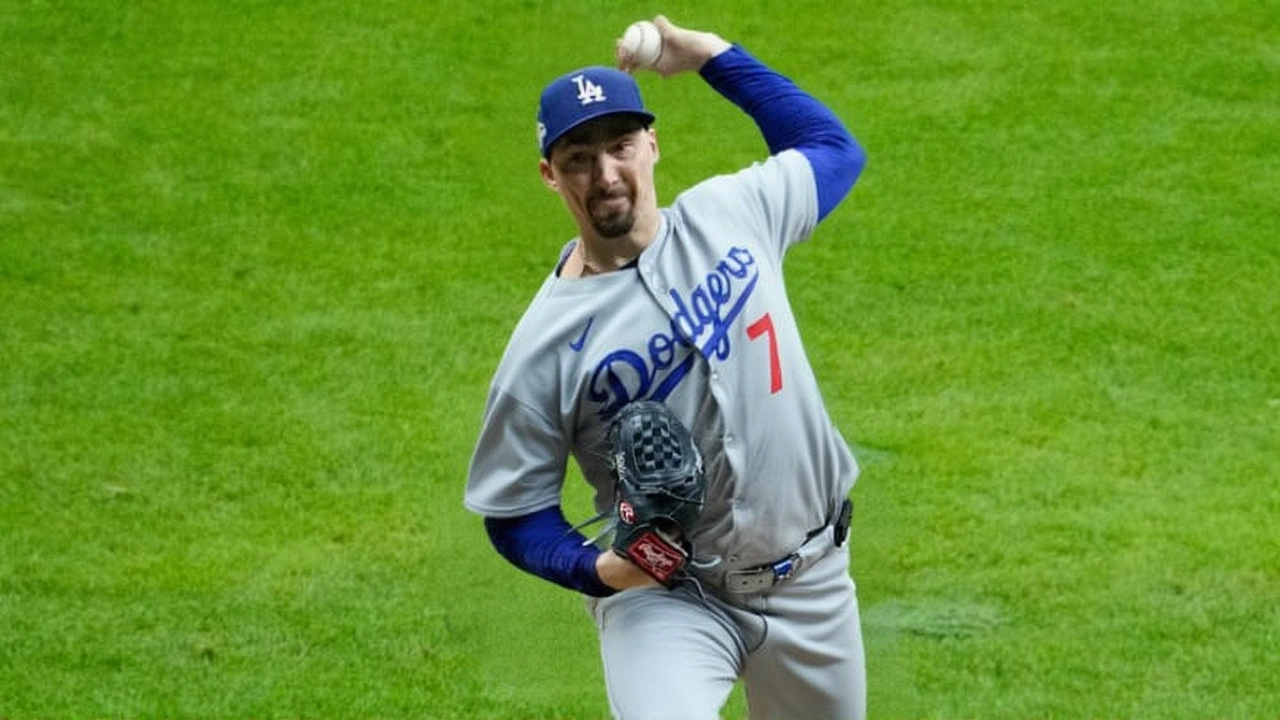When Blake Snell, starting pitcher of Los Angeles Dodgers took the mound at American Family Field on Monday, October 13, 2025, nobody expected a masterclass. Instead, Snell delivered eight shutout innings, surrendered just one hit, walked nobody and fanned ten Brewers. The result? A 2‑1 win that gave the defending champions a statistically‑significant edge in the National League Championship Series.
Why Snell’s outing matters
First, the numbers are eye‑popping. Out of his 103 pitches, 38 were changeups – a staggering 36.9% of the total – and 38 of the 58 swings against that pitch missed (a 65.5% whiff rate). That places his changeup among the top five single‑pitch whiff rates in postseason history since the pitch‑tracking era began in 2008. For context, the average changeup whiff rate in October baseball hovers around 35%.
Second, Snell’s stamina defied his own postseason résumé. Before 2025 he’d never gone beyond 5⅔ innings in a playoff start. Yet here he logged eight, struck out ten and allowed a lone single in the third inning by Jackson Chourio. He retired the next 16 batters consecutively – a stretch that included seven strikeouts and nine groundouts, only three of which left the infield faster than 80 mph.
Finally, the timing is crucial. Game 1 on the road has historically been a bellwether: teams that win the opener in a best‑of‑seven series go on to win the series 64.9% of the time, and when the win comes on the opponent’s turf under the modern 2‑3‑2 format, the odds climb to 56.3%.
How the Dodgers built the lead
It wasn’t a walk‑off homer; the Dodgers had to manufacture runs. In the sixth inning, Freddie Freeman, a 35‑year‑old Canadian first baseman for the Los Angeles Dodgers, launched a solo shot to put Los Angeles ahead 1‑0.
Six innings later, with the bases loaded and the pressure mounting, Mookie Betts earned a patient walk, nudging the margin to 2‑1. The ninth‑inning showdown saw the Brewers load the bases, only to watch Evan Phillips strike out the final batter for the save.
What the Brewers thought
Pat Murphy, manager of the Milwaukee Brewers, was blunt after the game. “That was perhaps the most dominant performance I’ve seen from an opposing pitcher in the ten years I’ve been on this staff,” he said. “I think it’s the most dominant performance against us.” His candor underscored how rare Snell’s outing was for a club that logged 102 regular‑season victories and swept all six head‑to‑head meetings with Los Angeles.

Statistical deep‑dive
- Total pitches: 103 (38 changeups, 28 fastballs, 22 curveballs, 15 sliders)
- Changeup whiff rate: 65.5% (38 swipes‑and‑misses of 58 swings)
- Batters faced: 30; walk‑free night
- Strikeouts: 10; groundouts: 9
- Postseason line through three 2025 starts: 0.86 ERA, 28 K, 6 H in 21 IP
Those numbers reflect a strategic shift. Snell admitted after the game, “I pitch off of what they’re telling me. They were aggressive on a certain pitch, so I threw more changeups. If they change their approach next time, I’ll bring the fastball back.”
Broader implications for the series
The Dodgers’ pitching staff entered the NLCS with a combined 1.54 postseason ERA, a franchise‑record low for a postseason rotation. Adding Snell’s dominance to the mix sets up a potential showdown in the World Series, where Los Angeles could face the Toronto Blue Jays on October 24, 2025, if the NLCS continues in their favor.
From a historical lens, teams that snag a road win in Game 1 of a 2‑3‑2 series often ride that momentum. The Dodgers, the defending World Series champions, now sit in a position that statistically favors a series victory. For the Brewers, the loss forces a quick reassessment of their offensive approach against Snell’s off‑speed arsenal.

What’s next for Snell and the Dodgers
Game 2 is slated for the next night at the same venue. While Snell may not start again so soon, the Dodgers will likely lean on Yoshinobu Yamamoto to keep the pressure on. Meanwhile, Snell hinted at a possible World Series start, saying, “To be here now, it’s a dream come true. I’m just going to do the best I can to help us win a World Series.” If Los Angeles repeats this level of pitching dominance, the postseason narrative could tilt heavily toward a repeat championship.
Frequently Asked Questions
How does Snell’s performance affect the Dodgers’ chances in the NLCS?
Snell’s eight‑hitless innings give Los Angeles a 2‑1 lead and a statistical edge. Historically, road‑game‑one winners in a 2‑3‑2 format capture the series 56.3% of the time, so the Dodgers now command both momentum and a favorable odds shift.
What made Snell’s changeup so effective against Milwaukee?
The Brewers’ right‑handed hitters swung at Snell’s changeup 62 times, missing 38. A 65.5% whiff rate is near‑record for a single pitch in postseason play, reflecting both Snell’s precise arm speed and the Brewers’ aggressive approach to off‑speed pitches.
Who were the key contributors for the Dodgers besides Snell?
First baseman Freddie Freeman delivered the go‑ahead solo homer in the sixth, while outfielder Mookie Betts drew a bases‑loaded walk in the ninth. Closer Evan Phillips sealed the win with a clean ninth‑inning finish.
What does this win mean for the Brewers moving forward?
The loss forces Milwaukee to reassess their approach to off‑speed pitching. With Snell likely to feature again in the series, the Brewers must find a way to break through his changeup dominance while avoiding the defensive miscues that have plagued them in the postseason.
When is the next NLCS game and where?
Game 2 is scheduled for October 14, 2025, at American Family Field in Milwaukee. The series will shift to Los Angeles for Games 3 and 4, then return to Milwaukee for a possible Game 5.
